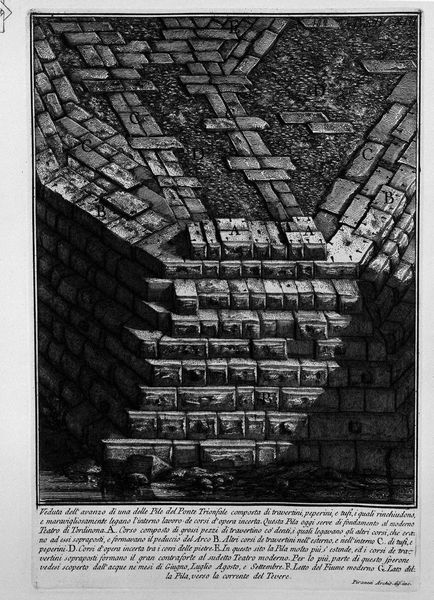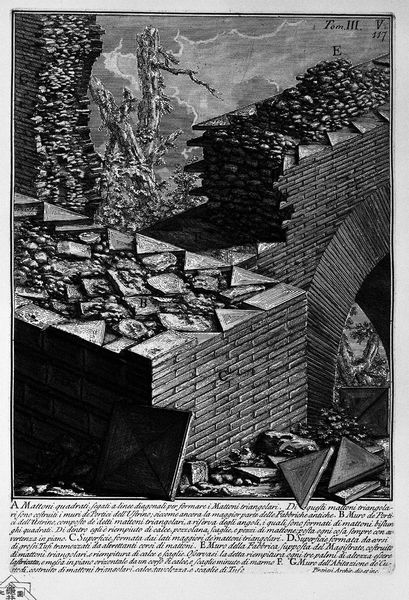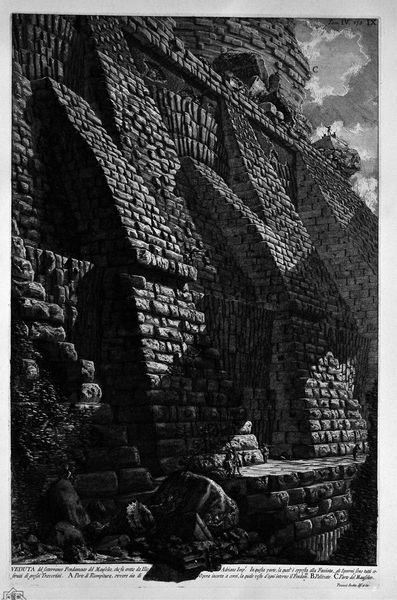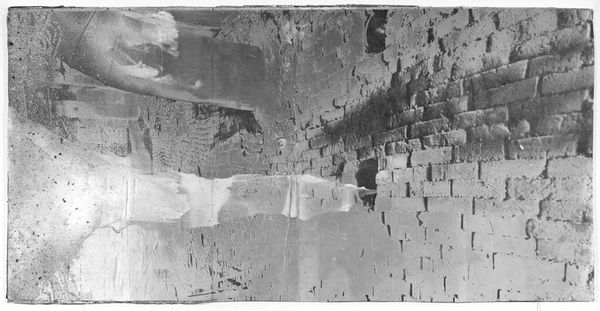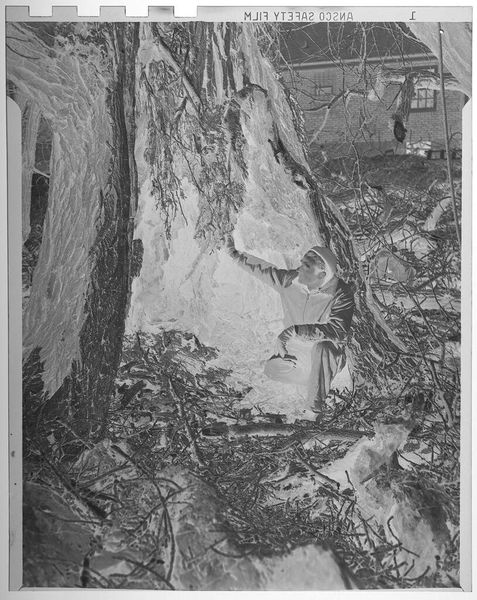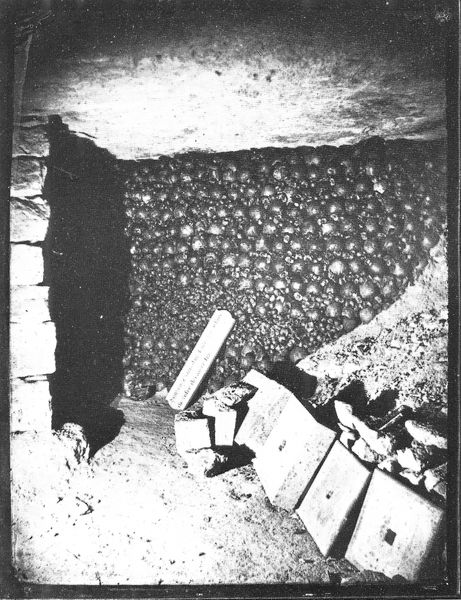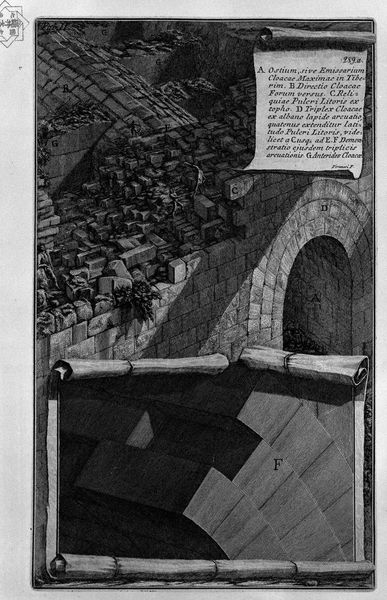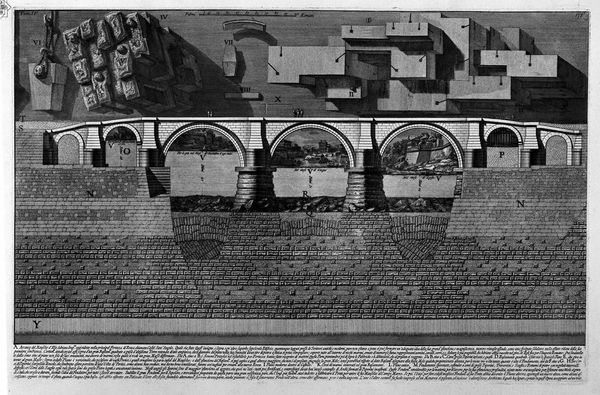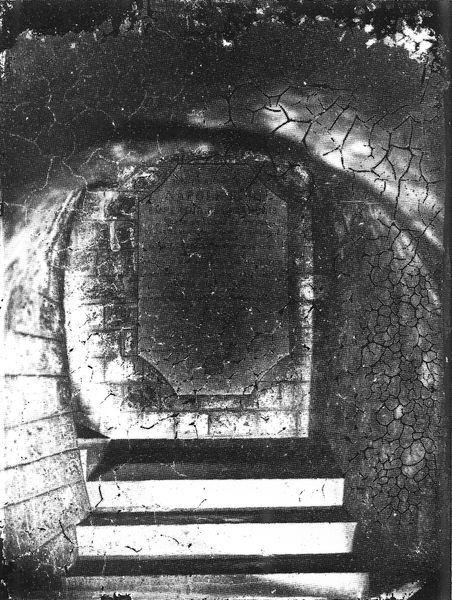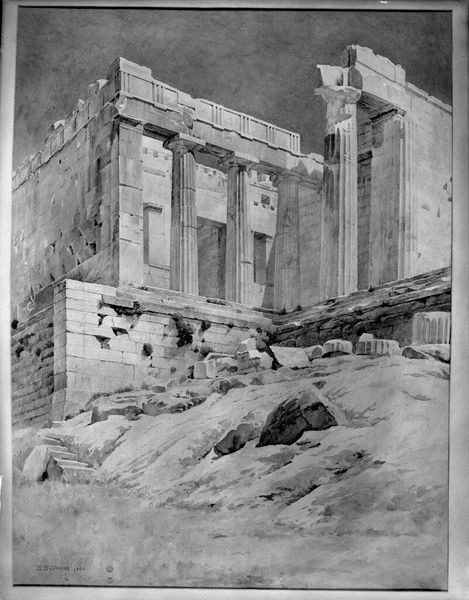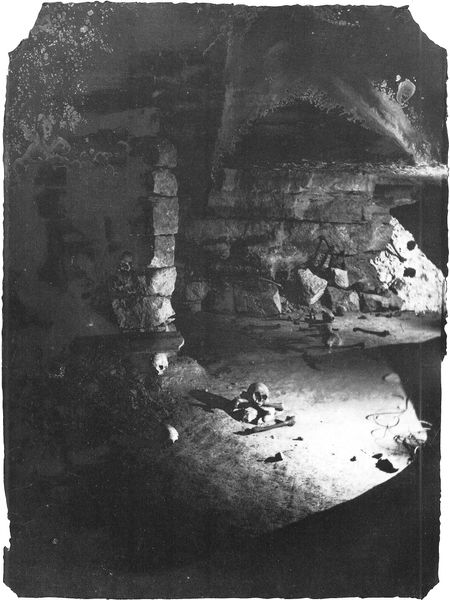
The Roman antiquities, t. 4, Plate XXXII. Following the above table.
0:00
0:00
drawing, print, etching, paper, engraving, architecture
#
drawing
# print
#
etching
#
landscape
#
paper
#
romanesque
#
geometric
#
ancient-mediterranean
#
column
#
history-painting
#
engraving
#
architecture
Copyright: Public domain
Editor: So, this print is titled "The Roman Antiquities, t. 4, Plate XXXII. Following the above table." It's by Giovanni Battista Piranesi. It looks like an architectural rendering, but there's something… almost melancholic about the ruins. What do you see in this piece? Curator: I see a powerful meditation on time and memory. Piranesi, through the precise rendering of these ruins, isn’t just documenting architecture. He’s invoking the emotional weight of history, the grandeur that’s faded, and what that tells us about ourselves. Editor: Grandeur that's faded, I like that. The figures almost seem overwhelmed by the scale. Curator: Precisely! Consider the human figures juxtaposed with these monumental remains. They serve as a visual anchor but also underscore the ephemerality of human existence against the backdrop of enduring, yet decaying, structures. Do you think that he wants to present the futility of our attempts? Editor: Maybe, but there is a powerful testament of past civilizations that lasts over the centuries! I'm wondering how this image would have been viewed at the time, then. Curator: It would have fed into the 18th-century obsession with the classical past but also a growing awareness of historical cycles—rise, fall, and decay. He suggests the emotional response to historical memory can instruct future aspirations. What did civilizations do to overpass these steps? Editor: So, it's a potent reminder that even the mightiest empires eventually crumble. I see what you mean! Looking at those shadows gives the print a strong emotional depth, so different from contemporary clean architecture drawings. Curator: Indeed, Piranesi employs light and shadow not just to describe form, but to evoke feelings of awe, loss, and the sublime. I think it provides context to contemporary interpretations, inviting reflections on our own cultural trajectories and the monuments we leave behind. What a dialogue we've started.
Comments
No comments
Be the first to comment and join the conversation on the ultimate creative platform.
